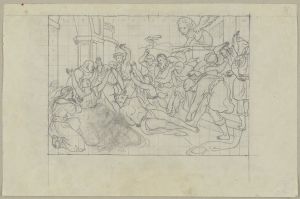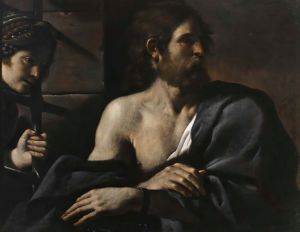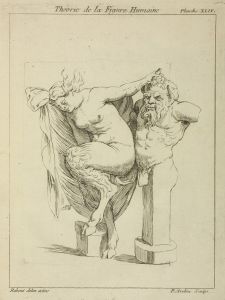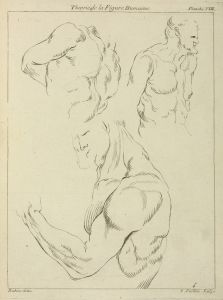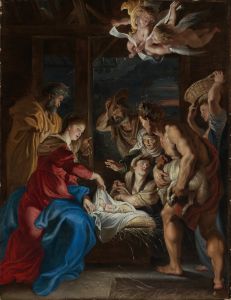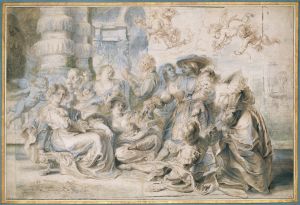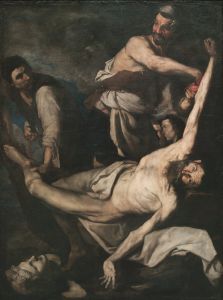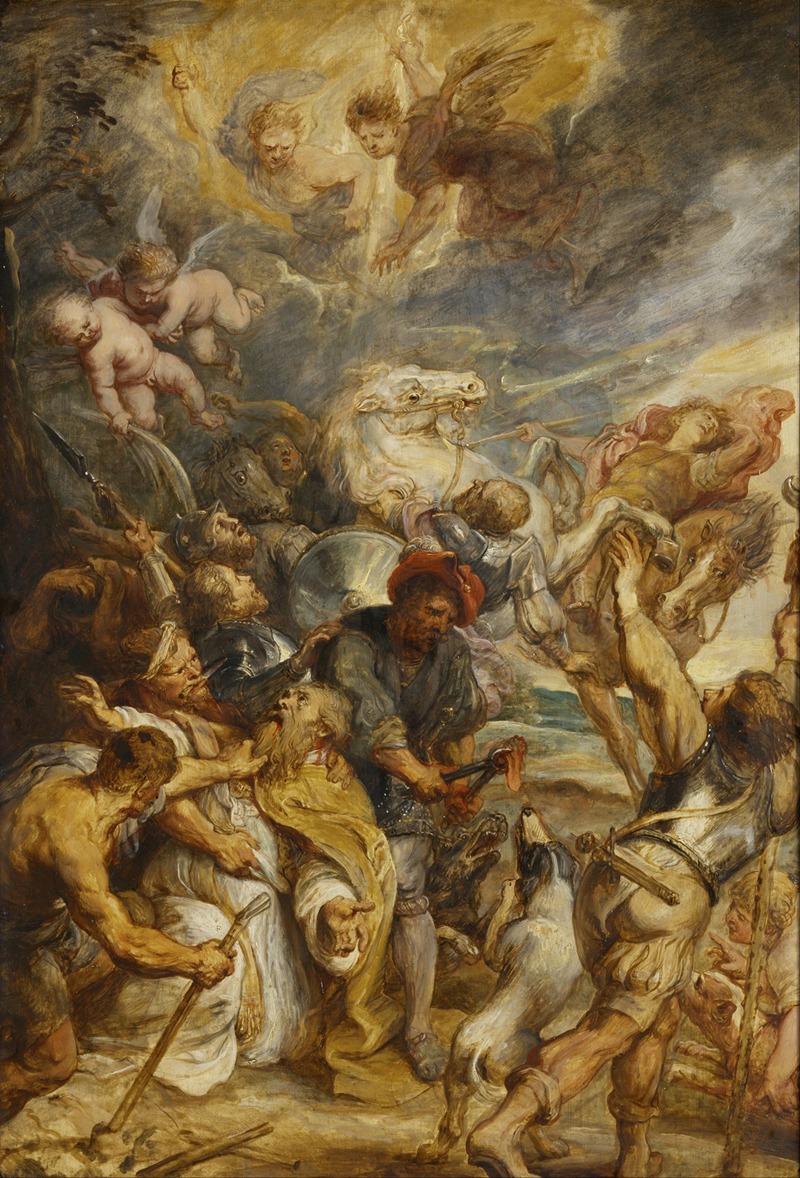
The Martyrdom of Saint Livinus
A hand-painted replica of Peter Paul Rubens’s masterpiece The Martyrdom of Saint Livinus, meticulously crafted by professional artists to capture the true essence of the original. Each piece is created with museum-quality canvas and rare mineral pigments, carefully painted by experienced artists with delicate brushstrokes and rich, layered colors to perfectly recreate the texture of the original artwork. Unlike machine-printed reproductions, this hand-painted version brings the painting to life, infused with the artist’s emotions and skill in every stroke. Whether for personal collection or home decoration, it instantly elevates the artistic atmosphere of any space.
Peter Paul Rubens, a prominent Flemish Baroque painter, is renowned for his dynamic compositions and vibrant use of color. Among his extensive oeuvre is "The Martyrdom of Saint Livinus," a painting that exemplifies his mastery in depicting dramatic religious scenes. This work captures the martyrdom of Saint Livinus, a Christian bishop and missionary who lived during the 7th century.
Saint Livinus is venerated in the Catholic Church as a martyr who suffered persecution for his faith. According to tradition, he was an Irish bishop who traveled to Flanders to preach Christianity. His missionary work, however, was met with resistance, and he ultimately faced a brutal death at the hands of pagans. The narrative of his martyrdom includes the gruesome detail of his tongue being torn out, a moment that Rubens chose to immortalize in his painting.
"The Martyrdom of Saint Livinus" is characterized by Rubens' signature style, which includes vigorous movement, emotional intensity, and a rich palette. The composition is dynamic, with figures arranged in a swirling motion that draws the viewer's eye across the canvas. Rubens' use of chiaroscuro—contrasting light and shadow—enhances the drama of the scene, highlighting the central figures and creating a sense of depth.
In the painting, Saint Livinus is depicted at the moment of his martyrdom. His expression is one of serene acceptance, a common motif in depictions of saints, symbolizing their unwavering faith and divine grace. Surrounding him are his tormentors, whose violent actions contrast with the saint's calm demeanor. This juxtaposition serves to emphasize the spiritual triumph of Livinus over his physical suffering.
Rubens' attention to detail is evident in the rendering of the figures' anatomy and the textures of their clothing and surroundings. The artist's ability to convey emotion through gesture and expression is particularly notable, as it engages the viewer and invites contemplation of the saint's sacrifice.
The painting is also a reflection of the Counter-Reformation ideals that influenced much of Rubens' work. During this period, the Catholic Church commissioned art that reinforced religious themes and inspired devotion among the faithful. By depicting the martyrdom of Saint Livinus, Rubens not only commemorated the saint's piety but also reinforced the Church's message of steadfast faith in the face of adversity.
While the exact date of the painting's creation is not definitively known, it is generally placed within the early 17th century, a time when Rubens was at the height of his artistic powers. "The Martyrdom of Saint Livinus" remains an important example of Rubens' religious works and continues to be studied for its artistic and historical significance.
Today, Rubens' painting is appreciated not only for its technical brilliance but also for its ability to convey the spiritual and emotional depth of its subject matter. It stands as a testament to Rubens' skill as a painter and his contribution to the Baroque movement, which sought to evoke emotion and grandeur through art.








